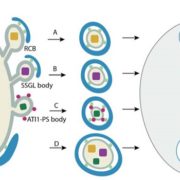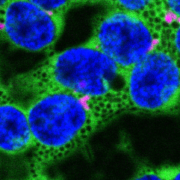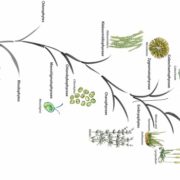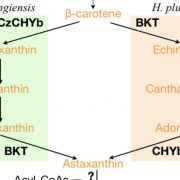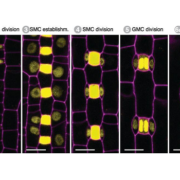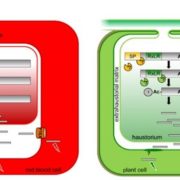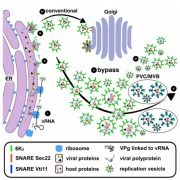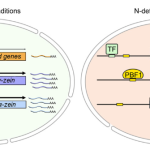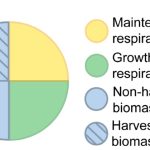Review: The cell biology of primary cell walls during salt stress (Plant Cell)
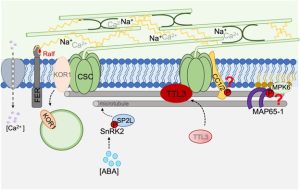 Salt is a massive problem for most land plants. At the macroscopic level, excess soil salinity can cause stunting or death. At the molecular / cellular level, salinity causes both osmotic and ionic challenges that affect membrane homeostasis, molecular interactions, and protein stability. A new review by Colin et al. focuses on the effects of salt stress on primary cell walls, where salinity is first experienced. Cell walls, even primary cell walls, are extremely complex, heterogenous composite structures held together by covalent and ionic bonds, and communicate directly with the underlying plasma membrane and cytoskeleton. Although we have some insights into where and how salinity is sensed at the membrane and within the cytosol, less is known about salt-sensing in the apoplast, making this a particularly interesting read. As the authors describe, Na+ can interfere with the interactions between Ca2+ and pectins, leading to cell wall instability (CWI) and the CWI-response, which involves the protein kinase FERONIA (FER). Salt also directly and indirectly (through effects on the cytoskeleton) affects cellulose synthase complexes, as reviewed here. Given that salt is one of the major environmental stresses affecting plants, and there have been several new insights into how salinity affects cell walls, this is an important and timely review. (Summary by Mary Williams @PlantTeaching) Plant Cell 10.1093/plcell/koac292
Salt is a massive problem for most land plants. At the macroscopic level, excess soil salinity can cause stunting or death. At the molecular / cellular level, salinity causes both osmotic and ionic challenges that affect membrane homeostasis, molecular interactions, and protein stability. A new review by Colin et al. focuses on the effects of salt stress on primary cell walls, where salinity is first experienced. Cell walls, even primary cell walls, are extremely complex, heterogenous composite structures held together by covalent and ionic bonds, and communicate directly with the underlying plasma membrane and cytoskeleton. Although we have some insights into where and how salinity is sensed at the membrane and within the cytosol, less is known about salt-sensing in the apoplast, making this a particularly interesting read. As the authors describe, Na+ can interfere with the interactions between Ca2+ and pectins, leading to cell wall instability (CWI) and the CWI-response, which involves the protein kinase FERONIA (FER). Salt also directly and indirectly (through effects on the cytoskeleton) affects cellulose synthase complexes, as reviewed here. Given that salt is one of the major environmental stresses affecting plants, and there have been several new insights into how salinity affects cell walls, this is an important and timely review. (Summary by Mary Williams @PlantTeaching) Plant Cell 10.1093/plcell/koac292


